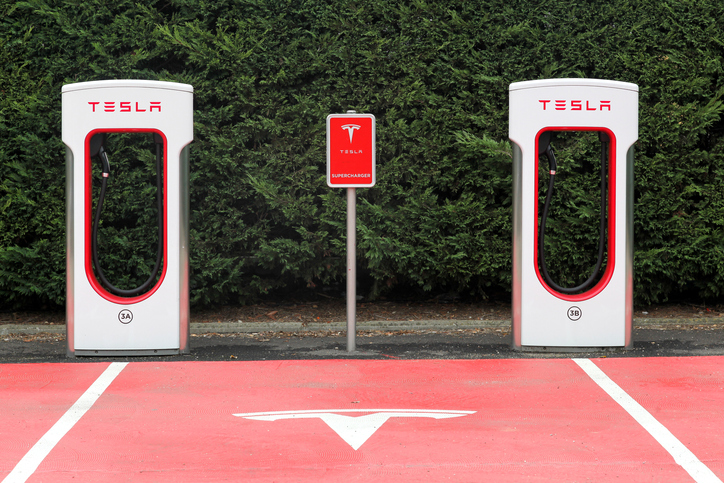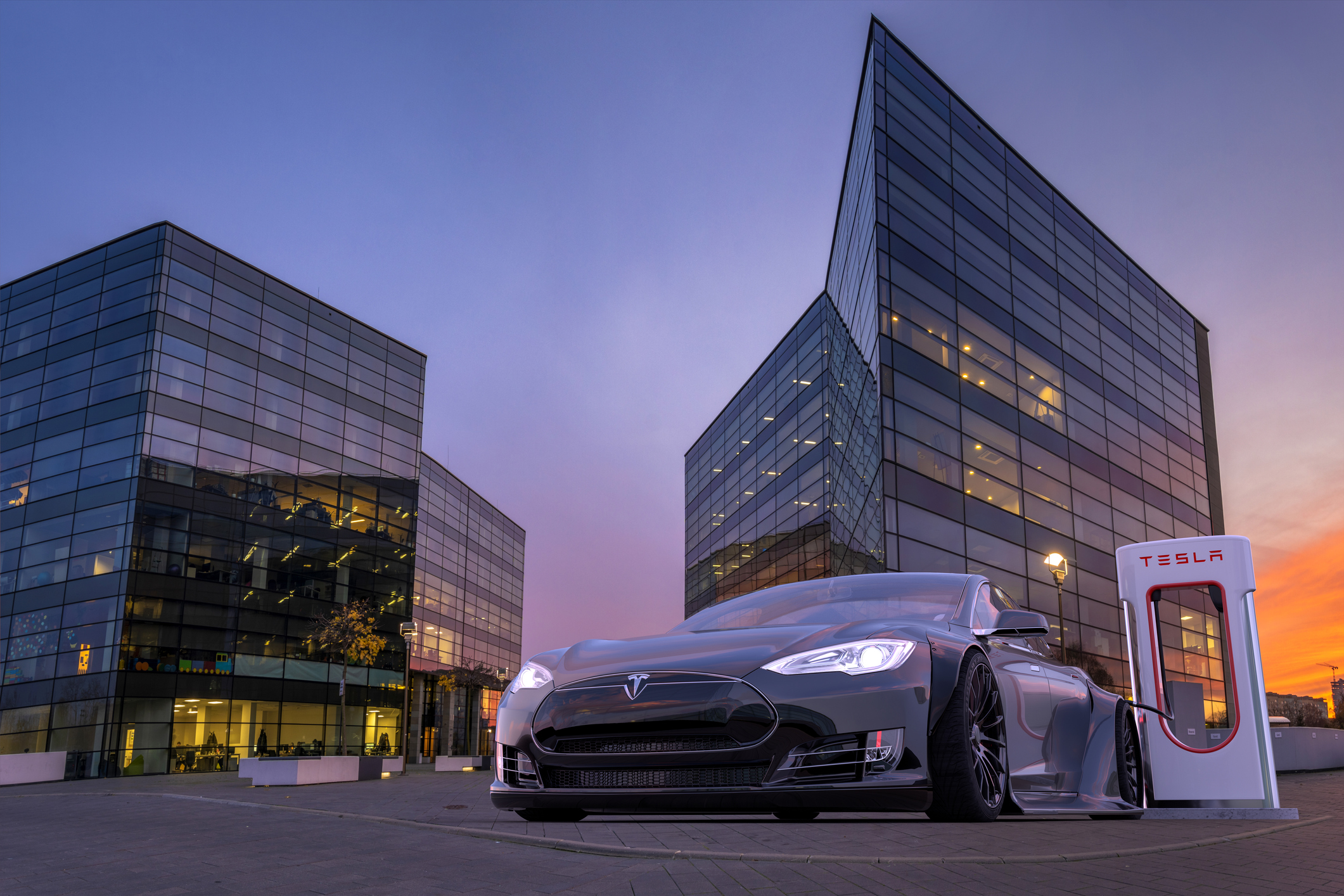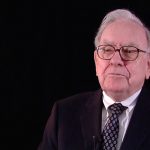Just understanding the cause of Tesla’s success through the lens of ‘a car company’ will only provide a partial picture. Tesla may look a lot like a carmaker in the traditional sense of the word. The company manufactures personal vehicles that are high performing and sleekly designed and that surpass industry safety standards. They also come equipped with autopilot features coordinated by high-tech sensors and cameras, which are connected to Tesla’s cloud to receive over-the-air software updates. And, of course, the cars are powered by Tesla’s electric engine, a proprietary technology that includes, significantly, the company’s energy storage systems.
However, I am willing to bet that there are more people who know the name of Tesla’s CEO than those who know that Tesla also sells solar panels, a Powerwall battery to store energy generated for domestic use, and the Powerpack, an industrial-scale energy-storage solution. In other words, Tesla is not really a carmaker at all, but rather an energy company that sells cars.
Thinking outside the walls of its category
Tesla has succeeded because it has been able to think outside the narrow parameters of its category and has built an ecosystem that solves a broader set of customer needs instead of transportation alone. Tesla is a prime example of a new type of company that I call ‘interaction field companies’. Unlike traditional pipeline businesses or even newer platform businesses, interaction field companies create an interaction field that consists of multiple different business models, platforms and ecosystems. These are linked together tightly, maximising interactions across many stakeholders, who I call ‘participants in an interaction field’. At the core of an interaction field is the nucleus of interactions driven by data, analytics, and technology such as advanced AI.
Tesla’s nucleus is the interactions between the company and consumers, enabled by a product and service ecosystem: software, cars, batteries, solar components, a supercharging network, and self-driving features. Since Tesla only sells direct to consumers, it enables and captures all interactions with consumers and their driving. This powers multiple platforms and ecosystems that are critical in the future EV ecosystem. Examples are Tesla Energy that delivers solar panels, solar roofing and battery storage packs to generate and store energy at home, the global network of Superchargers and Destination Chargers to stay charged wherever you go or the Tesla ride-sharing network that optimises vehicle utilisation. There is also the Tesla Mobile Service network of over 1,400 so-called Tesla Rangers that allows you to get your car serviced wherever you are with a click on an app.

When you are buying a Tesla, you are not buying a car, you are buying into the Tesla ecosystem that is closely connected to a comprehensive EV ecosystem including hardware suppliers, a huge network of software partners, and other stakeholders—as well as other entities you might not expect to see in the mix, such as competitors, observers, independent researchers, the electrical grid, infrastructure and government agencies.
By participating in these interconnected groups, interaction field companies can achieve the kind of unstoppable momentum and wild expansion that has been the hallmark of Telsa’s success this past year. There are four principles to Tesla’s success that are a blueprint for modern forward-thinking companies. These will be the crucial elements for remaining relevant in a world where consumers’ expectations have changed so dramatically.
-
Framing
Elon Musk is a master of framing. He does not frame Tesla as a maker of electric cars, just as LEGO does not frame itself as a maker of plastic bricks, but as ‘champions of free play’. Rather, Musk frames Tesla’s vehicle line within a higher purpose: weaning the world off fossil fuels and reducing the social stress of traffic. Tesla solves new problems and intractable challenges for multiple participants. Tesla solves for a lot more than just electric cars as a replacement of gasoline-powered cars. It solves for autonomous driving, lower CO2 emissions, better utilisation, lower cost of ownership of a car, traffic congestion, and so much more. When Tesla introduced its Model 3, the company did not focus on the car’s remarkable performance, although it could have. The Model 3 is a mass-produced sedan that can accelerate faster than any sports car—zero to sixty in three seconds. Yes, that alone is quite an attraction to participants. But Tesla puts performance in the context of the contributory role technology can play in society. When the car went on sale, Tesla booked $13 billion of orders in about a week.
-
Designing
Tesla creates shared value by designing for interactions, not just transactions. What does this mean? It means that rather than solely focusing on the production line and selling cars, Tesla is focused on improving every single driving experience. The data processing that takes place after every interaction or driving experience then helps to improve the overall experience, with the machine learning in its autopilot software increasing driver safety. Tesla collects more data through sensors and cameras than other manufacturers. As the company applies human knowledge and artificial intelligence to the large amounts of data being collected in each drive, a learning effect emerges. That is, the more information the product gathers and synthesizes, the more valuable it becomes. Teslas get smarter as you drive them, and the more Tesla drivers there are, the smarter the cars become. These improvements are built on collaboration, engagement and participation.
-
Building
Teslas are built to be open and comprehensive by deeply integrating into the lives of participants. Indeed, Tesla drivers are the most loyal customers of any car companies. They genuinely believe in the vision and values and are part of building the company. But it is not just car customers. Tesla has enormous potential to form ‘an interaction field’ of activity that intimately connects the energy sector with the mobility industry: solar-powered cars, trucks, buses, and trains, plugged into solar-powered homes and buildings. Given its pioneering position in the sale of EVs, Tesla is in a better place than many other long-standing manufacturers to lead growth in the decades ahead.
-
Sharing
Tesla doesn’t just hoard value for itself. It shares out value with the participants in its ‘interaction field’. A great example of how Tesla shares value is the Tesla Network. The vision of Tesla Network—in which Tesla owners can voluntarily rent out their vehicles while unused, similar to how Airbnb users rent out their apartments or homes—was conceived by Musk as early as 2016. This network depends on the autonomy of Tesla vehicles and regulatory approval, but Musk claimed at the time that such a service would reduce the cost of ownership to the point “where almost anyone could own a Tesla.” It is no wonder why the company engenders such loyalty among its customers.
The past year has really emphasised the complex interconnectedness of everyone on the planet. It is no longer enough for companies to just focus on the bottom line and competitive advantage in a world of limited resources and shared consequences. Tesla has risen to new heights, precisely because it represents something new. A company that thinks outside the narrow constraints of being a ‘car company’ and instead a company creating value for everyone in an ‘interaction field’. In doing so it is leading by example in representing a new way of doing business and solving a multitude of challenges for many different groups. As we have seen from the past year, this also benefits the traditional metric of the bottom line. Given the fragility of the planet and our global interdependence, companies like Tesla are the future, not only of business, but of the world.











